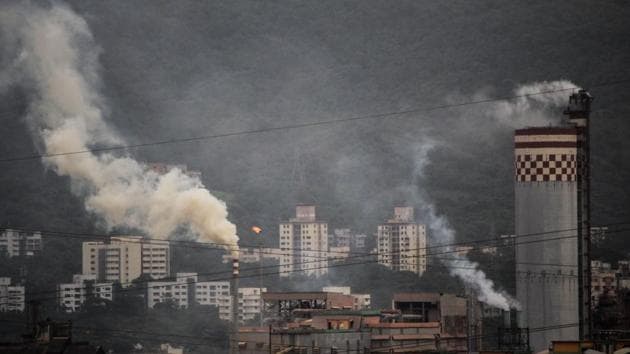October 26, 2023
Unmasking Mumbai’s Air Quality Crisis: Unraveling Causes and Solutions

Introduction:
- Mumbai, renowned for its coastal serenity and once-refreshing air, now grapples with an annual air quality decline reminiscent of Delhi’s persistent pollution concerns. This deterioration challenges the long-standing belief that its coastal location acted as a natural barrier against pollution. This article delves into the factors contributing to Mumbai’s air quality crisis, encompassing meteorological influences, local sources of pollution, and the need for concerted mitigation efforts.
Air Quality Deterioration in Mumbai:
Geographic Advantage Eroded:
- Mumbai’s coastal setting, historically a bastion against air pollution, has lost its efficacy. Previously, sea breezes played a pivotal role in dispersing particles, but this defense is no longer reliable.
Comparable Pollution Levels:
- Recent years have witnessed Mumbai experiencing prolonged periods of poor air quality, aligning with Delhi’s notorious smog issue. This parallel underscores the severity of Mumbai’s air quality crisis.
Meteorological Influence:
Crucial Wind Patterns:
- The direction and strength of winds are critical in shaping Mumbai’s air quality. Despite pollutant emissions akin to Delhi, Mumbai’s coastal nature affords an advantage.
Sea-Land Wind Cycle:
- Ordinarily, winds oscillate between sea-to-land and land-to-sea movements, aiding natural cleansing. Disruptions in this cycle significantly impact air quality, revealing the delicate balance at play.
Reasons for Such Poor Air Quality:
La Nina’s Role:
- The recent dip in La Nina, characterized by ocean surface cooling and altered wind patterns, contributed to heightened particulate matter levels in Mumbai. This anomaly delayed the expected strong wind reversal from the sea, leading to prolonged pollutant retention in the lower atmosphere.
Prevalent Construction Projects:
- With a staggering 6,000 ongoing construction sites, Mumbai faces a substantial challenge to its air quality. Dust displacement from roads and vehicles transporting construction debris compounds the pollution burden.
Domestic Sources:
- Local eateries utilizing unclean oils for cooking release a medley of harmful particles and gases, further exacerbating Mumbai’s air quality crisis.
How Local Weather Fuels It:
Calm Winds and Temperature Gradient:
- Post-monsoon, Mumbai experienced a lull in winds. A significant temperature disparity between the city and the nearby Sahyadri ranges led to winds ferrying construction site dust from Navi Mumbai, adding to the pollution load.
Not Solely a Local Issue:
- While unfavorable local weather conditions play a role, Mumbai’s baseline pollution levels are consistently surpassing its environmental capacity. Factors such as robust economic growth, escalating vehicle numbers, extensive construction, and heightened consumption are primary contributors.
Conclusion:
- Mumbai’s air quality predicament is an urgent call to action, demanding a comprehensive approach to curbing pollution sources and fortifying mitigation measures. While meteorological conditions bear some responsibility, the city’s burgeoning economic activity and escalating emissions are the driving forces behind this crisis. It is imperative for relevant authorities to take proactive steps to combat this issue and ensure a healthier environment for Mumbai’s residents.
Gist of daily Article /The Hindu 17oct 2025
October 17, 2025
Daily Gist of the Hindu/Indian Express : 16 Oct 2025
October 16, 2025
Daily Gist of The Hindu/Indian Express: 6 Oct 2025
October 6, 2025
Daily Gist of Article /The Hindu /Indian Express: 24 Sep 2025
September 24, 2025
